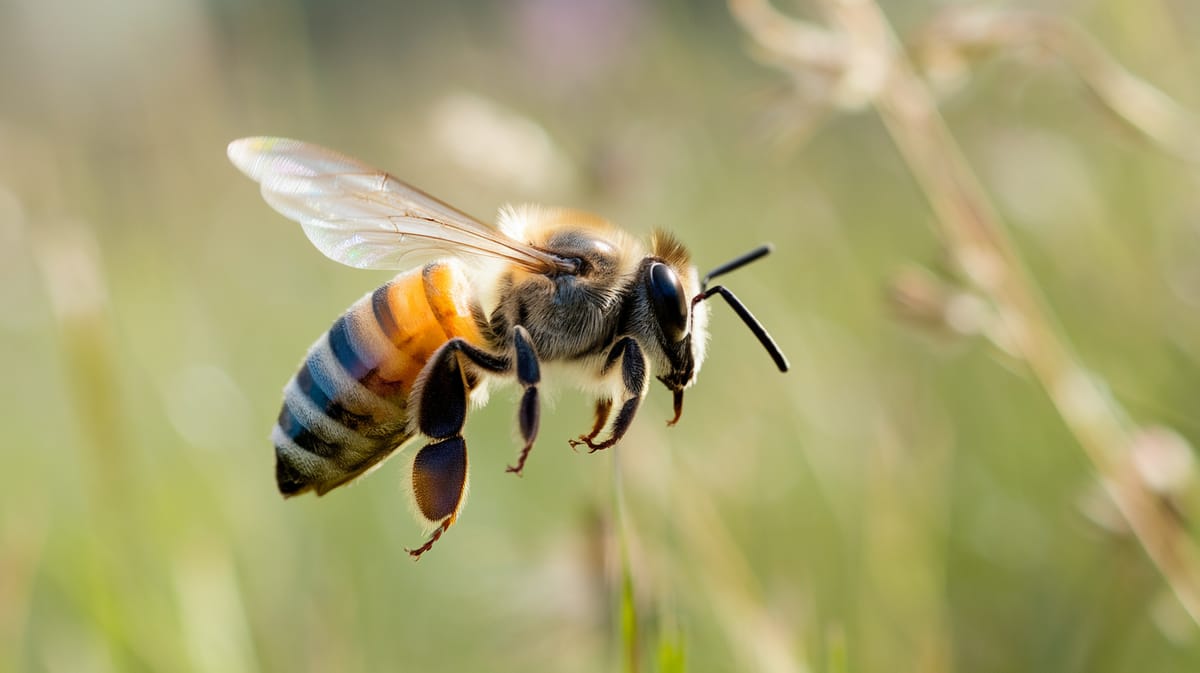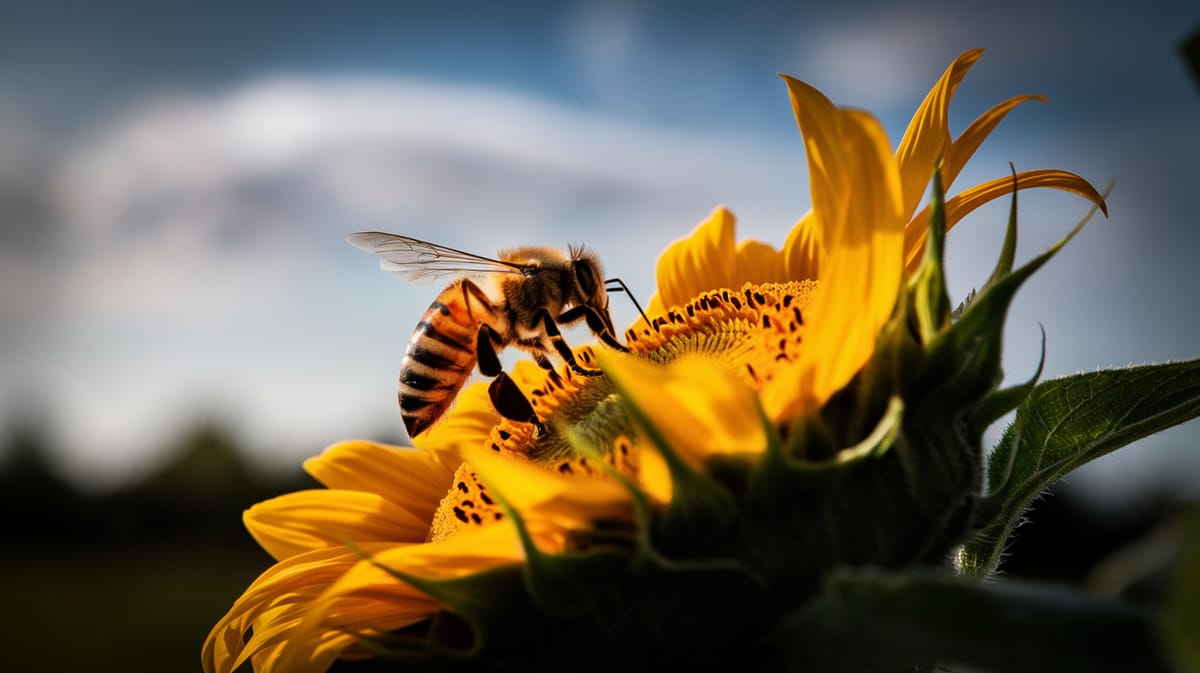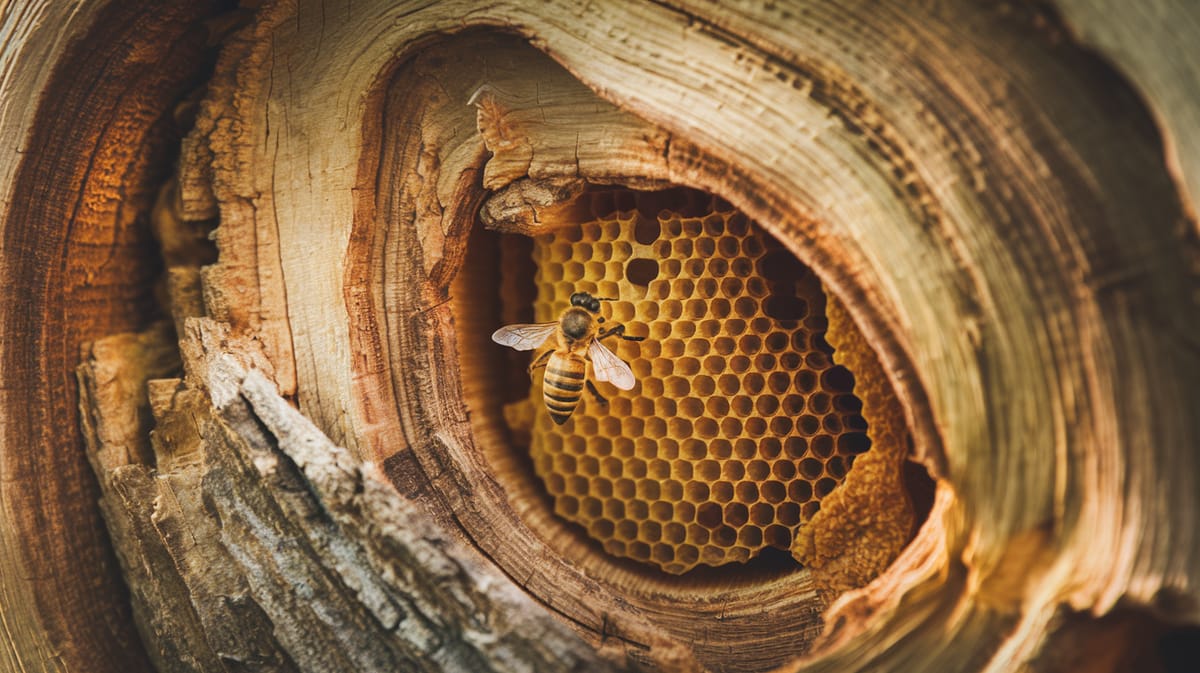Honey Bee
Buzzing with life and purpose, the Honey Bee is nature's master pollinator, crucial for biodiversity and agriculture worldwide. Its intricate hive society exemplifies teamwork and efficiency.

Key Insights at a Glance
Did You Know?
Taxonomy & Classification
Honey bees are essential pollinators renowned for their complex social behavior and communication via dance, which reflects their evolutionary adaptation to cooperative colony life. Let's understand the evolutionary journey and classification of these remarkable pollinators.
Species Diversity
The genus Apis includes seven recognized species, with Apis mellifera being the most widespread, vital for global agriculture.
Ancient Origins
Honey bees originated in South Asia and spread globally, surviving through significant climatic shifts over millions of years.
Lifecycle and Growth
A remarkable journey of transformation from Egg to Adult.
Egg
The queen lays each egg in a honeycomb cell, starting its journey in the hive's nurturing environment.
Larva
Fed royal jelly initially, larvae grow rapidly, transforming through constant feeding and cell confinement.
Pupa
Enclosed in a capped cell, the pupa undergoes metamorphosis, developing adult features like wings and legs.
Adult
Emerging as worker, drone, or queen, adults engage in diverse roles essential for colony survival.
Dietary Habits
A pollinator with precise foraging techniques, this insect relies on floral resources, adapting to seasonal and floral diversity.
| DIET TYPE | DESCRIPTION |
|---|---|
| Primary Diet | Consumes nectar as its primary energy source, using specialized proboscis to extract it from various flowers. |
| Secondary Diet | Collects pollen, a vital protein source, storing it in pollen baskets on its hind legs. |
| Occasional | Occasionally uses honeydew from aphids as a carbohydrate source, particularly when nectar is scarce. |

Behaviour and Adaptations
Discover the fascinating traits that make the Honey Bee a vital pollinator and social insect.
Dance Communication
Honey bees use waggle dances to convey food source locations.
Efficient Pollination
Their fuzzy bodies and frequent flower visits make them excellent pollinators.
Hive Organization
Structured roles within the hive enhance survival and productivity.
Ecosystem Impact
Honey Bees play a crucial role in sustaining ecosystems through pollination, biodiversity, and habitat creation.
Pollination Powerhouse
Honey Bees pollinate crops and wild plants, essential for food production and ecosystem diversity.
Biodiversity Boosters
They enhance plant genetic diversity by transferring pollen between plants, aiding species survival.
Habitat Creators
Their activities promote growth of plants that provide habitats for various wildlife.
Conservation Challenges
Understanding and addressing the major threats to Honey Bee populations.
Pesticide Use
Chemical pesticides disrupt bee health and colony structures.
Habitat Loss
Urbanization and agriculture reduce natural foraging and nesting sites.
Climate Change
Temperature shifts alter blooming patterns and bee life cycles.
Frequently Asked Questions
How long do Honey Bee live?
Worker bees live about 5-7 weeks during active seasons, while queen bees can live up to 2-3 years. Drones, the male bees, typically live several weeks, mainly during mating season. Lifespan can vary based on factors such as role and environmental conditions.
What do Honey Bee eat?
Honey bees primarily consume nectar and pollen. Nectar provides them with energy through carbohydrates, while pollen offers essential proteins, vitamins, and minerals. The nectar collected is also used to produce honey, which serves as a stored food source for the colony.
Are Honey Bee poisonous?
Honey bees are not poisonous, but they can sting, which releases venom. The sting is primarily defensive and can cause pain, swelling, or allergic reactions in some people. Generally, honey bees pose minimal threat unless provoked or threatened.
Are Honey Bee endangered?
Honey bees are not currently classified as endangered, but they face threats from habitat loss, pesticides, diseases, and climate change. These factors contribute to declining populations, raising concerns for their conservation and the ecological role they play in pollination.
What do Honey Bee symbolize?
Honey bees often symbolize hard work, cooperation, and productivity due to their social structure and role in pollination. In various cultures, they are seen as symbols of diligence, prosperity, and community, highlighting their importance in agriculture and ecosystems.
Do Honey Bee bite?
Honey bees do not bite; they sting. A sting is a defensive action where the bee injects venom through its stinger. Only female bees, particularly workers, have stingers. The stinger is barbed, causing the bee to die after stinging.
What color are Honey Bee?
Honey bees are typically golden-yellow with black bands across their bodies. Their coloring helps them blend into their surroundings, offering camouflage against predators. The body also has fine hairs that assist in pollen collection during foraging.
Does a Honey Bee have wings?
Yes, honey bees have wings. They possess two pairs of wings: the forewings and hindwings. These wings allow them to fly efficiently, navigate to flowers for foraging, and return to the hive. Wings are crucial for their role in pollination.
What does a Honey Bee look like?
Honey bees are small insects with a distinctive golden-yellow body and black stripes. They have six legs, two pairs of wings, large compound eyes, and antennae. They are covered in fine hairs that help in collecting pollen.
Is a Honey Bee an insect?
Yes, a honey bee is an insect. It belongs to the order Hymenoptera, which includes ants and wasps. Like other insects, honey bees have a three-part body structure: head, thorax, and abdomen, along with six legs and two pairs of wings.
Related Insects
Discover insects with similar characteristics to Honey Bee - including shared habitats, diets, and taxonomic classifications
Share this profile
Help others discover Honey Bee
